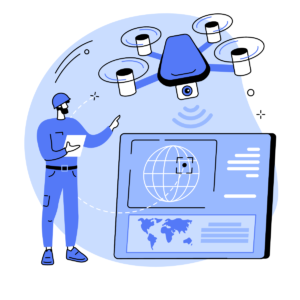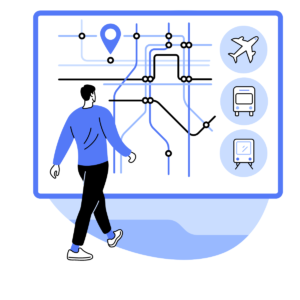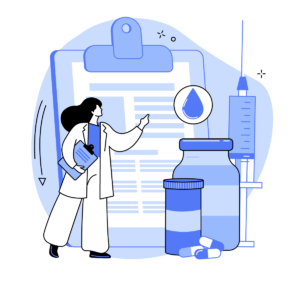2023 will see the extended use of digital twin technology. Let’s explore some of the exciting possibilities it offers.
What is Digital Twin Technology ?
Put very simply, digital twin technology enables the creation of a virtual version of a physical object, process, system, or environment that looks and behaves in exactly the same way as its real-world counterpart. Digital twins can help us design, engineer, manufacture, test, analyse, sell, and operate everything and anything from consumer goods to machinery and buildings to whole cities. They can even replicate the human body which has game changing implications for healthcare and the pharmaceutical industry.
How is the Technology Used?
 Digital twin technology is an immensely powerful tool which can be used across a whole range of sectors and use cases. Let’s take a look at just some of the industries that are embracing and being revolutionised by it.
Digital twin technology is an immensely powerful tool which can be used across a whole range of sectors and use cases. Let’s take a look at just some of the industries that are embracing and being revolutionised by it.
Any industry that manufactures anything can use digital twins to design and test new products before they are mass produced, redesign existing ones, implement quality controls, improve the efficiency of the entire production process, and reduce downtime. Additionally, digital twins can be used to simulate and optimize supply chain and logistics operations and predict and prevent equipment failure.

In the aerospace industry products like aircraft and spacecraft are astronomically expensive and complex to design and build. Digital twins are used, often alongside AI and CAD technology, in aircraft design, engineering, testing, and maintenance and to improve safety and performance.
In the automotive industry digital twins are used to simulate and test new vehicle designs before they are built, optimize production processes, and predict how a vehicle will perform in any conditions. Automotive OEMs can save time and money by using twin technology to help solve any issues in the manufacturing process.

In construction the technology is used to create virtual models which give architects, engineers, and construction professionals the power to simulate and optimize the design, construction, and operation of any structure, saving time and money throughout the construction process. Digital twins can also be used to monitor and predict how buildings will perform over a certain period of time or in specific conditions.
Digital twin technology helps builders, planners, and developers make our towns and cities work better. By using advanced, interactive models and live IoT data, things like traffic flow, movement of people, and the effects of climate change on key infrastructure like airports, roads, and transportation networks can be studied so that vital infrastructure is designed and scaled to meet future demand.

In retail the technology is used to create virtual representations of physical shops, allowing retailers to see how different designs and layouts would work. And of course, we are seeing the increased use of digital product twins used online to help sell products of all kinds. The technology can help improve customer experience, increase sales, and reduce costs. It is also key in inventory management, and supply chain optimization.

In healthcare, digital twin technology is used to replicate the human body. This is vital in the development of new drugs and the design of medical devices. It can also help predict how certain conditions or diseases will evolve. Another powerful application of the technology is in training medical professionals to carry out complex medical procedures.

In 2023 we are likely to see digital twin technology become more sophisticated and widely adopted in more and more industries and use cases. The integration of digital twins with internet of things (IoT) devices and the use of artificial intelligence and machine learning to enhance their functionality will enable real-time monitoring and control of physical systems.
Some key players in the twin technology space
Here are some of the companies who are developing twin technology solutions.
Siemens AG: digital twin software, IoT sensors, and cloud-based platforms for data analysis and visualization.
GE Digital digital twin solutions for industrial assets like power plants, wind turbines, and oil and gas facilities. Software for 3D modelling, simulation, and analytics, as well as IoT sensors and edge computing devices.
PTC Inc has a platform for creating and managing digital twins called ThingWorx which allows users to connect, monitor, and control physical assets using IoT sensors, and provides tools for data visualization and analytics.
Dassault Systèmes are active in aerospace and defence, automotive, and consumer goods. software for 3D modelling, simulation, and analytics, and cloud-based platforms for data management and collaboration.
Autodesk software tools for creating, visualizing, and analysing digital twins. Fusion 360, is their cloud-based platform that allows users to create 3D models, simulate performance, and collaborate with others in real-time.
AspenTech solutions for the process industry, including oil and gas, chemical, and pharmaceuticals. software for process modelling, simulation, and optimization, and cloud-based platforms for data management and analytics.

